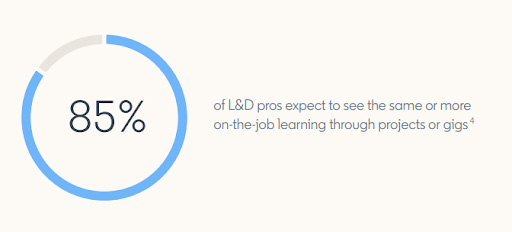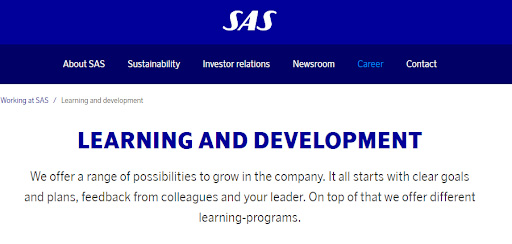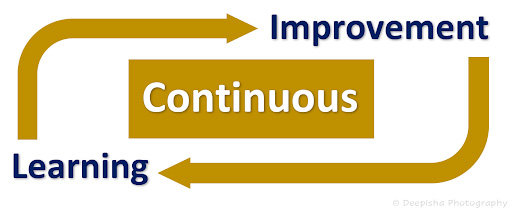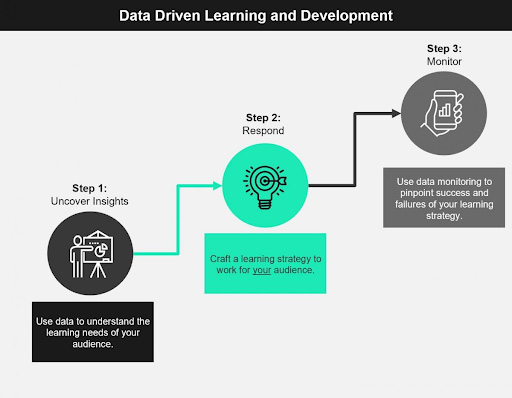As businesses face increasing competition and strive to stay ahead of the curve, the need for effective learning strategies has never been more important. In order to succeed, you need to look at the best learning strategy examples and tips so you can apply them to your business.
By cultivating a culture of learning and growth in your organization, you can gain a competitive advantage and ensure your long-term growth.
In this article, we will explore various learning strategy examples and tips for creating an effective strategy in 2023.
What Is A Learning Strategy?
Learning strategies are the processes and techniques used to help organizations acquire and apply knowledge, skills, and abilities to improve their performance and reach their objectives.
They are designed to equip employees with the knowledge and skills needed to perform their jobs effectively and to help organizations achieve their strategic objectives.
A study shows that 70% of employees want a say in identifying their learning opportunities.
And almost all of them claim to stay longer if they feel their company is making learning a priority.
So you understand the importance of learning to employees and the business (employees are the biggest asset, right?)
Why Is An Organizational L&D Critical To Success?
Organizational learning is a critical factor for success in any business.
A sound L&D strategy can help a company stay ahead of the competition, generate new ideas, and boost productivity, among other things. It is beneficial not only for the business but for the employees and even customers as well. Read our article, “Continuous Learning Benefits The Entire Organization” to learn more.
According to a study, 85% of L&D professionals expect to see more on-the-job learning through projects or gigs

So, by leveraging the collective knowledge of the organization, an L&D strategy can help businesses stay competitive and meet customer needs. Organizational learning helps the company in several ways.
First, it enables the organization to develop a unified set of strategies and processes that can be used to develop and improve products, services, and customer experiences. With a unified strategy, everyone in the organization can work together to ensure a successful outcome.
Second, it helps keep employees and customers happy. By providing employees with the opportunity to learn and develop new skills, they can better understand their roles and responsibilities within the organization. This can lead to greater job satisfaction and improved customer service.
Additionally, when customers receive better service, they are more likely to be loyal and return for future purchases.
Finally, it can help businesses stay abreast of emerging trends, technologies, and best practices.
By staying on top of the latest developments, companies can better anticipate customer needs and provide more tailored services.
Learning Strategy Examples
If you want some (real-life) effective learning strategy examples to make the most of YOUR own career and development programs, then this blog section is it.
We’ll discuss three of the top learning strategies used by leading companies: Amazon’s Career Choice Program, Google’s Googler-to-Googler program, and SAS’s Learning & Development Programs.
Amazon’s Career Choice Program is a great example of a learning and development strategy that can help employees pick the right career path.
The program offers an array of on-the-job training opportunities, such as job shadowing, mentorship, and webinars. It also offers a variety of career counseling services.
With the help of these resources, employees can explore different career paths and make the best decisions for their future.

Their strategy is a great way to ensure that your team is developing the skills they need and that they are making the right career choices.
Through this program, Amazon employees can gain access to financial support and resources to help them pursue their career goals.
Google’s Googler-to-Googler program is designed to help employees learn from each other and develop new skills.
They call it g2g, and it has contributed to establishing a learning culture at the giant tech.
Through this program, employees can build connections with their peers and gain access to learning materials.
Google also encourages employees to share their knowledge and experiences with each other and to help each other achieve their goals.
This program is a great way for employees to gain valuable skills and insights, and it accounts for up to 80% of all learning activity that takes place there.
SAS’s Learning & Development Programs are designed to provide employees with the opportunity to learn new skills and stay ahead of the curve.
SAS is well-known for its staff development programs throughout its (tens of thousands) locations globally.
Candidates that showcase the ability to adapt to a constantly shifting environment and do not wish to become overly focused on a single aspect are sought after by the organization.

Through this program, employees can access online learning materials and participate in virtual workshops.
SAS also provides access to training resources and mentorship programs.
The primary focus of their training program is the cultivation of sales, leadership, marketing skills, technical abilities, etc.
Tips For Effective L&D Strategy In 2023
1. Revise And Update Your Employee Training Program
Revising and updating an employee training program can be a daunting task, so it’s important to start by evaluating the current program.
Ask yourself the following questions:
- Is the program providing the necessary knowledge and skills to employees?
- Is the program helping to improve employee performance and productivity?
- Are there any areas that need improvement?
The answers to these questions can help you determine where updates are needed and where to focus most.
If you want to modernize your employee training program in 2023, the article, “3 Tips For Modernizing Employee Training” is for you.
According to recent data, having opportunities to grow is the number 1 factor that employees say defines an outstanding work environment.
So keep that in mind.
Taking the time to review and update your program on a regular basis helps to ensure that your employees are always up-to-date on the latest information, skills, and best practices.
Additionally, it helps to ensure that you remain competitive in a constantly changing business landscape.
2. Consider Your Organizational Goals, Budget, And Resources
A successful L&D strategy should be adapted to the particular needs and context of an organization.
It should also be tailored for different roles and levels within the organization, as well as consider your goals, budget, and resources, among others. Read our article, “Key Considerations For A Successful L&D Strategy” to learn more.
For example, a strategy for frontline managers might include a focus on developing their leadership and communication skills, while a strategy for senior management might involve a focus on understanding the organization’s strategic objectives and developing initiatives to help achieve them.
Organizations can use a variety of tools and approaches to develop an L&D strategy, such as performance appraisal systems, training and development programs, and mentoring.
Learning strategy examples include establishing and maintaining a learning culture, developing a performance management system, setting objectives and goals, providing training and development opportunities, and encouraging employees to participate in professional development activities.
3. Invest In Continuous Learning
Investing in continuous learning at scale is essential for the success of any organization.
Continuous learning helps organizations stay current, remain competitive and bridge the gap between current and future needs.
It can also create a culture of learning and engagement in the workplace, which is crucial for any organization’s long-term success.
In today’s ever-changing business environment, organizations must be prepared to take on new challenges and evolve quickly.

It’s no longer sufficient to rest on their laurels and remain complacent.
Instead, organizations must ACTIVELY invest in learning and development to ensure they remain competitive and maintain their competitive edge.
Continuous learning at scale can provide organizations with the tools and knowledge needed to stay nimble and grow.
4. Embrace A Data-Driven Approach
When it comes to your Learning and Development (L&D) strategy, making sure you take a data-driven approach is essential.
After all, data is the key to making informed decisions and helping you to get the best from your team.
A data-driven approach to learning and development means using data
- to identify training needs,
- to track the effectiveness of learning interventions,
- and assess how well the learning has been absorbed.
Not only does this help to ensure that your team is getting the most out of their training, but it can also help to identify areas of improvement and inform future strategies.
How Do You Go About Taking A Data-Driven Approach?
1– Well, the first step is to identify the data points you need to track to understand the effectiveness of your training.
This could include looking at the average time to complete a course, average scores on tests, or the number of employees who pass a course or training with a certain level of mastery.
2– Once you’ve identified the data points, you’ll need to collect and analyze the data.
This could be done manually (MEH, who does this in 2023?) or using a Learning Management System (LMS) to track and store data.
By having an LMS, you can easily generate reports and compare data points over different periods of time.
3– Once you’ve collected and analyzed the data, you can use the insights to make improvements to your L&D strategy.
With the right data, you can make informed decisions and help your team to reach its potential.

Final remarks
In conclusion, learning and development strategies offer invaluable benefits to businesses as they strive to stay ahead of the competition.
It is essential to become familiar with some of the best learning strategy examples and tips to ensure successful implementation.
By doing so, business owners can create a culture of learning and growth, allowing them to gain a competitive advantage and remain successful in the future.
With the right tools and strategies, businesses can implement effective learning strategies that will help them reach their goals in 2023 and beyond.

